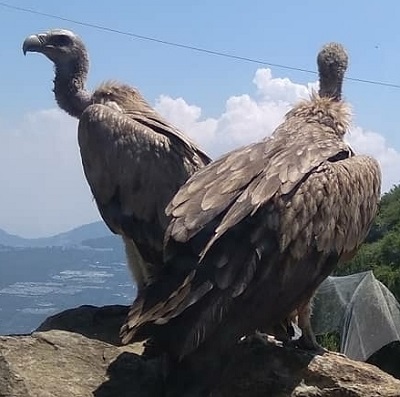New Delhi, (Asian independent) The populations of the drastically depleted resident vulture species have at least stabilised at their new low levels, an update on vulture population trends in India said.
This is, however, in contrast to Nepal where the non-steroidal anti-inflammatory drugs (NSAID) threat has been more effectively addressed since around 2012 and both resident species of Gyps vultures have increased consistently and significantly.
Extensive road transects carried out by the Bombay Natural History Society (BNHS), one of India’s oldest conservation organisations, for the eighth time since 1992 have provided the longest-term and most comprehensive information available on changes in vulture numbers in India.
An update, based upon survey data collected in 2022, was published online in Bird Conservation International this week, demonstrating that populations of the drastically depleted resident vulture species have at least stabilised at their new low levels.
The 17,000 km of road transects took place across 13 states using standardised times and observers. They took place at the end of the breeding season, which maximises the chances of seeing flying vultures, and at a time when migrant species are absent.
Publication of the latest results was keenly awaited to see how effective India’s conservation measures have been. It is partially good news that the declines have stopped, but dashed any hopes that there are signs of recovery. The threat of extinction was very real until the ban on veterinary use of the NSAID diclofenac in 2006.
Evidence from these surveys suggests that the ban has been partially effective. However, populations remain at very low levels, following declines of 97.9 per cent for the long-billed vulture and 99.8 per cent for the white-rumped vulture since 1992, and 48 per cent and 87 per cent declines respectively since 2002.
Vibhu Prakash, recently retired from BNHS and coordinator of all eight surveys, said, “These surveys are an important measure of how well the vultures are doing. Getting the permissions and experienced team together is always a challenge, but there is no better way of getting a clear picture of the status of vultures across a large swathe of India.”
John Mallord, RSPB Research Scientist, explained, “We had hoped to repeat the survey sooner, but Covid-19 and other constraints meant that this was not possible, so it was a big relief to get it completed. Although the results are largely positive, it is also clear that there is much more work to do.
“Similar surveys in Nepal show a very different picture, with populations growing as fast as it is possible to do. The logical explanation is that the key threat of toxic NSAIDs has been addressed more effectively in Nepal, further underlining the importance of effective regulation of these killer veterinary drugs.
“Cattle treated with such NSAIDs are highly toxic to any vultures consuming their tissues, but because the birds usually only die days later, it’s very difficult to pinpoint.”
The paper describes how some of the transects pass close to and through numerous protected areas, where vulture numbers have held up slightly better than in the wider landscape and points out that the trends away from protected areas are likely to be less positive.
Indeed, citizen science information from the ‘State of India’s Birds’ using birdwatchers’ eBird observations give a more negative picture, further highlighting this concern.
Ashwin Viswanathan, scientist of Nature Conservation Society, Bengaluru, said “because birdwatchers’ records are often away from protected areas, this may explain the different trends. Neither survey method shows any sign of a consistent increase for any species”.
Rhys Green, Professor of Conservation Science at the University of Cambridge and involved in vulture studies in India for 20 years, said, “The absence of any sign of population recovery in India is likely to be because veterinary NSAIDs toxic to vultures have continued to be sold widely in veterinary pharmacies.
“This includes continuing illegal sales of diclofenac, as well as toxic drugs such as aceclofenac, ketoprofen and nimesulide whose use has remained legally approved. The recent banning of aceclofenac and ketoprofen is welcome but will take time to become effective.”








